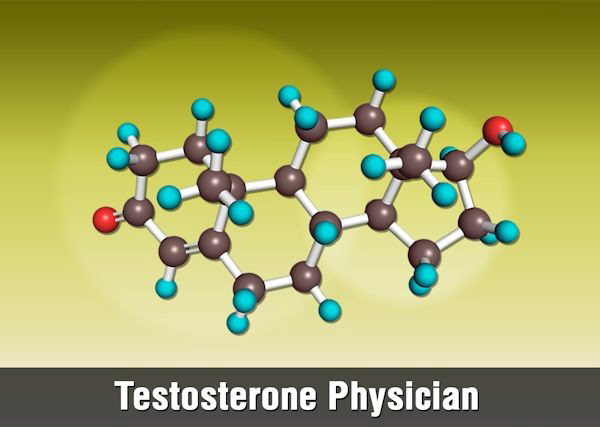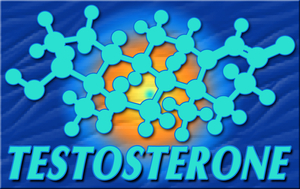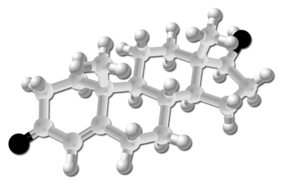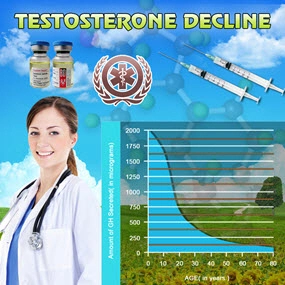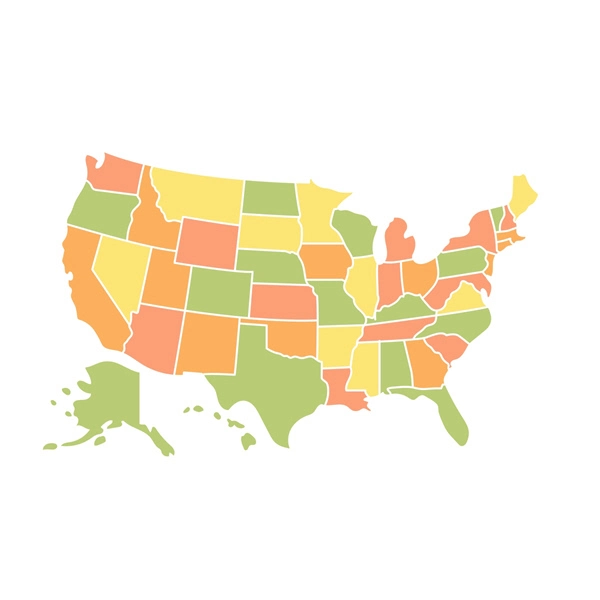Introduction to Humatrope
Humatrope, a synthetic human growth hormone, has emerged as a pivotal therapeutic agent in pediatric endocrinology. Specifically formulated to mimic the natural growth hormone produced by the pituitary gland, Humatrope is administered to address growth deficiencies in children, including those classified as small for gestational age (SGA). This article delves into the application of Humatrope in treating SGA infants, highlighting its efficacy and the considerations for its use.
Understanding Small for Gestational Age
Infants categorized as SGA are born with a birth weight or length below the 10th percentile for their gestational age. This condition can lead to short stature and other health challenges if not addressed appropriately. The use of growth hormone therapy, such as Humatrope, has been explored as a means to improve growth outcomes in these children.
The Mechanism of Humatrope in SGA Treatment
Humatrope functions by stimulating growth in children who lack adequate endogenous growth hormone. In SGA infants, the administration of Humatrope can help to normalize growth patterns, potentially reducing the long-term impact of their initial growth deficiency. The hormone promotes the growth of long bones, increases muscle mass, and can enhance the overall physical development of the child.
Clinical Evidence Supporting Humatrope Use
Numerous clinical trials have underscored the effectiveness of Humatrope in SGA infants. Studies have demonstrated that early intervention with Humatrope can lead to significant improvements in height velocity and final adult height. For instance, a multi-center study showed that SGA children treated with Humatrope experienced an increase in height standard deviation scores, bringing them closer to the normal range for their age and sex.
Administration and Dosage Considerations
The administration of Humatrope requires careful monitoring and adjustment based on the individual needs of the infant. Typically, the treatment is initiated at a low dose, with increments made based on the child's growth response and any side effects observed. Regular assessments by a pediatric endocrinologist are crucial to tailor the therapy effectively and safely.
Potential Side Effects and Safety Profile
While Humatrope is generally well-tolerated, potential side effects include injection site reactions, headaches, and, in rare cases, more severe issues such as increased intracranial pressure. It is essential for healthcare providers to discuss these risks with parents and monitor the child closely throughout the treatment period.
Long-Term Outcomes and Quality of Life
The long-term benefits of Humatrope in SGA infants extend beyond mere height gains. Improved stature can enhance self-esteem and social integration, contributing positively to the child's overall quality of life. Moreover, early intervention may mitigate some of the health risks associated with short stature, such as metabolic syndrome.
Conclusion: The Role of Humatrope in SGA Management
Humatrope represents a significant advancement in the treatment of SGA infants, offering a pathway to improved growth and development. As research continues to refine our understanding of its optimal use, Humatrope remains a valuable tool in the arsenal of pediatric endocrinologists committed to enhancing the lives of children born small for gestational age.
In conclusion, the judicious use of Humatrope in SGA infants not only addresses immediate growth concerns but also lays the foundation for healthier, more fulfilling lives. As with any medical intervention, a collaborative approach involving healthcare providers, parents, and the child is essential to achieving the best possible outcomes.
Contact Us Today For A Free Consultation

- Exploring the Role of Humatrope in Managing Short Bowel Syndrome: A Comprehensive Review [Last Updated On: February 28th, 2025] [Originally Added On: February 28th, 2025]
- Navigating Compliance Hurdles in Pediatric Humatrope Therapy: Strategies for American Families [Last Updated On: February 28th, 2025] [Originally Added On: February 28th, 2025]
- Humatrope's Role in Managing Growth Retardation in American Males with CKD [Last Updated On: March 4th, 2025] [Originally Added On: March 4th, 2025]
- Exploring the Impact of Humatrope on Quality of Life in Men with Growth Hormone Deficiency [Last Updated On: March 15th, 2025] [Originally Added On: March 15th, 2025]
- Exploring the Impact of Humatrope on Lipid Profiles in Adults with Growth Hormone Deficiency [Last Updated On: March 16th, 2025] [Originally Added On: March 16th, 2025]
- Unveiling the Immune-Boosting Potential of Humatrope in Men with Growth Hormone Deficiency [Last Updated On: March 16th, 2025] [Originally Added On: March 16th, 2025]
- Unraveling the Impact of Humatrope on Carcinoid Syndrome in Growth Hormone Deficient American Males [Last Updated On: March 16th, 2025] [Originally Added On: March 16th, 2025]
- Exploring the Impact of Humatrope Therapy on Vision in Growth Hormone Deficient American Males [Last Updated On: March 16th, 2025] [Originally Added On: March 16th, 2025]
- Unveiling the Therapeutic Potential of Humatrope in Treating Sheehan's Syndrome: A Clinical Perspective [Last Updated On: March 16th, 2025] [Originally Added On: March 16th, 2025]
- Humatrope's Potential in Enhancing Wound Healing for American Males: A Comprehensive Overview [Last Updated On: March 16th, 2025] [Originally Added On: March 16th, 2025]
- Humatrope's Impact on Metabolic Syndrome in American Males with Growth Hormone Deficiency [Last Updated On: March 17th, 2025] [Originally Added On: March 17th, 2025]
- Humatrope Therapy: Enhancing Cardiovascular Health in American Males [Last Updated On: March 18th, 2025] [Originally Added On: March 18th, 2025]
- Humatrope: Enhancing Growth and Quality of Life in American Males with Noonan Syndrome [Last Updated On: March 19th, 2025] [Originally Added On: March 19th, 2025]
- Humatrope's Effects on Insulin Sensitivity in American Men with Growth Hormone Deficiency [Last Updated On: March 20th, 2025] [Originally Added On: March 20th, 2025]
- Humatrope: Long-Term Safety and Efficacy for Growth Disorders in American Males [Last Updated On: March 20th, 2025] [Originally Added On: March 20th, 2025]
- Humatrope's Cognitive Benefits for American Males with Growth Hormone Deficiency [Last Updated On: March 21st, 2025] [Originally Added On: March 21st, 2025]
- Humatrope's Impact on Muscle Strength in American Males with Growth Hormone Deficiency [Last Updated On: March 21st, 2025] [Originally Added On: March 21st, 2025]
- Humatrope's Role in Managing HIV-Associated Wasting Syndrome: Clinical Insights and Considerations [Last Updated On: March 21st, 2025] [Originally Added On: March 21st, 2025]
- Humatrope's Role in Managing Cancer Cachexia: Benefits for American Males [Last Updated On: March 22nd, 2025] [Originally Added On: March 22nd, 2025]
- Humatrope Enhances Immune Function in Men with Growth Hormone Deficiency [Last Updated On: March 22nd, 2025] [Originally Added On: March 22nd, 2025]
- Humatrope's Impact on Mental Health in American Males with Growth Hormone Deficiency [Last Updated On: March 22nd, 2025] [Originally Added On: March 22nd, 2025]
- Humatrope Therapy Enhances Skin Health in American Males with Growth Hormone Deficiency [Last Updated On: March 22nd, 2025] [Originally Added On: March 22nd, 2025]
- Humatrope Therapy Enhances Sleep Quality in Men with Growth Hormone Deficiency [Last Updated On: March 22nd, 2025] [Originally Added On: March 22nd, 2025]
- SHOX Deficiency in American Males: Humatrope's Role in Enhancing Growth and Quality of Life [Last Updated On: March 22nd, 2025] [Originally Added On: March 22nd, 2025]
- Humatrope in Anti-Aging: Benefits, Risks, and Ethical Considerations for American Males [Last Updated On: March 23rd, 2025] [Originally Added On: March 23rd, 2025]
- Humatrope's Potential in Managing Chronic Liver Disease in American Males [Last Updated On: March 23rd, 2025] [Originally Added On: March 23rd, 2025]
- Humatrope Therapy's Impact on Renal Function in American Males with GHD [Last Updated On: March 23rd, 2025] [Originally Added On: March 23rd, 2025]
- Humatrope Therapy: A Promising Treatment for Chronic Fatigue Syndrome in American Males [Last Updated On: March 23rd, 2025] [Originally Added On: March 23rd, 2025]
- Humatrope Therapy Enhances Dental Development in American Boys with GHD [Last Updated On: March 24th, 2025] [Originally Added On: March 24th, 2025]
- Humatrope Therapy in American Males: Effects on Adrenal Function and Monitoring Strategies [Last Updated On: March 24th, 2025] [Originally Added On: March 24th, 2025]
- Humatrope: A Novel Approach to Managing Hyperthyroidism in American Males [Last Updated On: March 24th, 2025] [Originally Added On: March 24th, 2025]
- Humatrope: Managing Pituitary Tumor Effects in American Men [Last Updated On: March 24th, 2025] [Originally Added On: March 24th, 2025]
- Humatrope Therapy Enhances Hearing in American Men with Growth Hormone Deficiency [Last Updated On: March 24th, 2025] [Originally Added On: March 24th, 2025]
- Humatrope Therapy: A Promising Approach for Hyperparathyroidism in American Males [Last Updated On: March 24th, 2025] [Originally Added On: March 24th, 2025]
- Humatrope Therapy Enhances Hypothalamic Function in American Men with GHD [Last Updated On: March 25th, 2025] [Originally Added On: March 25th, 2025]
- Humatrope's Impact on Gastrointestinal Function in American Men with GHD [Last Updated On: March 25th, 2025] [Originally Added On: March 25th, 2025]
- Humatrope Enhances Fertility in American Males with Growth Hormone Deficiency: A Comprehensive Review [Last Updated On: March 25th, 2025] [Originally Added On: March 25th, 2025]
- Humatrope's Potential in Managing Rheumatoid Arthritis: A New Hope for American Males [Last Updated On: March 25th, 2025] [Originally Added On: March 25th, 2025]
- Humatrope Enhances Pulmonary Function in American Males with Growth Hormone Deficiency [Last Updated On: March 25th, 2025] [Originally Added On: March 25th, 2025]
- Humatrope: Enhancing Energy and Vitality in American Males with Growth Hormone Deficiency [Last Updated On: March 25th, 2025] [Originally Added On: March 25th, 2025]
- Humatrope's Impact on Parathyroid Function in American Men with Growth Hormone Deficiency [Last Updated On: March 25th, 2025] [Originally Added On: March 25th, 2025]
- Humatrope: A Promising Treatment for Hypoparathyroidism in American Males [Last Updated On: March 25th, 2025] [Originally Added On: March 25th, 2025]
- Humatrope's Impact on Gonadal Function in American Men with Growth Hormone Deficiency [Last Updated On: March 26th, 2025] [Originally Added On: March 26th, 2025]
- Humatrope's Impact on Hair Growth in Men with Growth Hormone Deficiency [Last Updated On: March 26th, 2025] [Originally Added On: March 26th, 2025]
- Humatrope's Efficacy in Treating Osteoporosis in American Males with GHD [Last Updated On: March 26th, 2025] [Originally Added On: March 26th, 2025]
- Humatrope Therapy's Impact on Vision in Growth Hormone Deficient American Males [Last Updated On: March 26th, 2025] [Originally Added On: March 26th, 2025]
- Humatrope's Potential in Treating Anorexia Nervosa: Benefits and Risks for American Males [Last Updated On: March 26th, 2025] [Originally Added On: March 26th, 2025]
- Humatrope's Efficacy in Treating GHD Post-Cranial Irradiation in American Males [Last Updated On: March 26th, 2025] [Originally Added On: March 26th, 2025]
- Humatrope's Impact on Thyroid Function in American Men with Growth Hormone Deficiency [Last Updated On: March 26th, 2025] [Originally Added On: March 26th, 2025]
- Humatrope: Enhancing Growth in American Males with Congenital Adrenal Hyperplasia [Last Updated On: March 27th, 2025] [Originally Added On: March 27th, 2025]
- Humatrope's Role in Managing Diabetes Mellitus in American Males: Clinical Insights [Last Updated On: March 27th, 2025] [Originally Added On: March 27th, 2025]
- Humatrope's Role in Managing Cystic Fibrosis: Benefits for American Males [Last Updated On: March 28th, 2025] [Originally Added On: March 28th, 2025]
- Humatrope: Enhancing Life for American Men with Growth Hormone Deficiency [Last Updated On: March 28th, 2025] [Originally Added On: March 28th, 2025]
- Humatrope's Role in Managing Hypothyroidism: Insights for American Males [Last Updated On: March 28th, 2025] [Originally Added On: March 28th, 2025]
- Humatrope: A Promising Treatment for Hypergonadism in American Males [Last Updated On: March 28th, 2025] [Originally Added On: March 28th, 2025]
- Humatrope's Role in Managing Addison's Disease in American Males: Benefits and Considerations [Last Updated On: March 29th, 2025] [Originally Added On: March 29th, 2025]
- Humatrope Therapy in American Males: Balancing GHD Treatment and Adrenal Health [Last Updated On: March 29th, 2025] [Originally Added On: March 29th, 2025]
- Humatrope: A Promising Therapy for Hypogonadism in American Males [Last Updated On: March 31st, 2025] [Originally Added On: March 31st, 2025]
- Humatrope's Impact on Cushing's Syndrome in GHD American Males: Efficacy and Challenges [Last Updated On: March 31st, 2025] [Originally Added On: March 31st, 2025]
- Humatrope's Impact on Conn's Syndrome and GHD in American Males: A Dual Therapy Approach [Last Updated On: March 31st, 2025] [Originally Added On: March 31st, 2025]
- Humatrope's Role in Treating Neuroendocrine Tumors: Insights for American Males [Last Updated On: April 1st, 2025] [Originally Added On: April 1st, 2025]
- Humatrope Therapy: A Promising Approach for Managing Pheochromocytoma in American Males [Last Updated On: April 3rd, 2025] [Originally Added On: April 3rd, 2025]
- Humatrope's Therapeutic Impact on Carcinoid Syndrome in American Males with GHD [Last Updated On: April 4th, 2025] [Originally Added On: April 4th, 2025]
- Humatrope as Adjunctive Therapy for Prolactinoma: Benefits and Considerations [Last Updated On: April 5th, 2025] [Originally Added On: April 5th, 2025]
- Humatrope's Role in Managing Multiple Endocrine Neoplasia for American Males [Last Updated On: April 7th, 2025] [Originally Added On: April 7th, 2025]
- Craniopharyngioma in American Males: Humatrope's Role and Comprehensive Treatment Insights [Last Updated On: April 7th, 2025] [Originally Added On: April 7th, 2025]
- Humatrope Therapy: Managing Acromegaly and GHD in American Males [Last Updated On: April 8th, 2025] [Originally Added On: April 8th, 2025]
- Humatrope's Impact on American Males with GHD-Induced Gigantism: Efficacy and Life Transformation [Last Updated On: April 8th, 2025] [Originally Added On: April 8th, 2025]
- Humatrope's Impact on Pituitary Apoplexy in American Males with GHD: Benefits and Clinical Insights [Last Updated On: April 10th, 2025] [Originally Added On: April 10th, 2025]
- Humatrope's Role in GHD and Its Link to Lymphocytic Hypophysitis in Men [Last Updated On: April 11th, 2025] [Originally Added On: April 11th, 2025]
- Humatrope's Impact on Central Precocious Puberty in American Males with GHD [Last Updated On: April 11th, 2025] [Originally Added On: April 11th, 2025]
- Humatrope Therapy: A Promising Approach for Managing Diabetes Insipidus in American Males [Last Updated On: April 12th, 2025] [Originally Added On: April 12th, 2025]
- Humatrope Therapy's Impact on Empty Sella Syndrome in American Males with GHD [Last Updated On: April 12th, 2025] [Originally Added On: April 12th, 2025]
- Humatrope's Role in Managing SIADH: Benefits, Risks, and Treatment Integration for American Males [Last Updated On: April 13th, 2025] [Originally Added On: April 13th, 2025]
- Humatrope's Role in Managing Sheehan's Syndrome for American Males [Last Updated On: April 13th, 2025] [Originally Added On: April 13th, 2025]
- Humatrope: A Promising Treatment for Delayed Puberty in American Males [Last Updated On: April 15th, 2025] [Originally Added On: April 15th, 2025]
- Humatrope Therapy for CHARGE Syndrome: Enhancing Growth and Quality of Life [Last Updated On: April 15th, 2025] [Originally Added On: April 15th, 2025]
- Humatrope Therapy: Enhancing Health in American Males with GHD and HH [Last Updated On: April 16th, 2025] [Originally Added On: April 16th, 2025]
- Humatrope's Role in Enhancing Life Quality for Males with Klinefelter Syndrome [Last Updated On: April 16th, 2025] [Originally Added On: April 16th, 2025]
- Humatrope Therapy: Enhancing Growth and Life Quality in American Males with Down Syndrome [Last Updated On: April 17th, 2025] [Originally Added On: April 17th, 2025]
Word Count: 541

